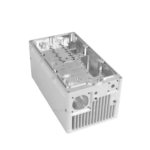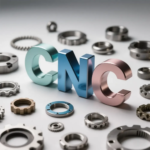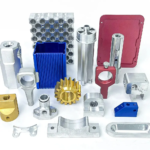The World of 3D Printing: A Comprehensive Guide to PLA Plastic
As the world of 3D printing continues to grow and evolve, it’s no secret that the material selection has become a crucial aspect of the process. Among the various types of 3D printing materials, PLA (Polylactic Acid) has gained popularity due to its versatility, eco-friendliness, and ease of use. In this article, we’ll delve into the world of 3D printing PLA plastic, exploring its characteristics, benefits, and the best practices for printing with this material.
What is PLA Plastic?
PLA is a biodegradable thermoplastic made from renewable resources such as corn starch, sugarcane, or potato starch. It’s a bioplastic, which means it’s compostable and non-toxic, making it an attractive option for eco-conscious makers and artists. PLA plastic is also known for its ease of use, as it’s relatively inexpensive, lightweight, and can be printed at a relatively low temperature.
Characteristics of PLA Plastic
PLA plastic exhibits several characteristics that make it an ideal choice for 3D printing:
- Biodegradable: PLA is made from natural resources and can be broken down into carbon dioxide and water, making it an environmentally friendly option.
- Biocompatable: PLA is non-toxic and hypoallergenic, making it suitable for printing medical devices, prosthetics, and other applications that require a non-toxic material.
- Flexible: PLA has a certain degree of flexibility, allowing it to be bent and flexed without breaking.
- Thermoformable: PLA can be heated and molded to create complex shapes and designs.
- Inexpensive: PLA is generally cheaper than other 3D printing materials, making it an attractive option for beginners and hobbyists.
Benefits of Printing with PLA Plastic
The benefits of printing with PLA plastic are numerous:
- Eco-friendliness: PLA plastic is biodegradable and non-toxic, making it an attractive option for environmentally conscious makers.
- Cost-effective: PLA is generally cheaper than other 3D printing materials, making it an affordable option for beginners.
- Easy to print: PLA can be printed at a relatively low temperature, making it easy to work with.
- Versatile: PLA can be used for a variety of applications, from prototyping to production parts.
Preparing PLA Plastic for 3D Printing
Before printing with PLA plastic, it’s essential to ensure the filament is properly prepared and ready to use. Here are a few tips to get you started:
- Dry the filament: PLA plastic can absorb moisture, which can cause it to clog the extruder. Make sure to dry the filament thoroughly before printing.
- Store the filament properly: Keep the filament in an airtight container to prevent moisture from entering. You can also store the filament in a desiccant bag or container.
- Use the right temperature: PLA plastic requires a specific temperature range for printing. Make sure to check the temperature range for your 3D printer and adjust accordingly.
Troubleshooting Common Issues with PLA Plastic
As with any 3D printing material, PLA plastic requires some troubleshooting. Here are a few common issues and solutions:
- Clogged extruder: Clean the extruder regularly, and ensure the filament is properly cut and fed into the extruder.
- Inconsistent layer adhesion: Adjust the layer temperature and adjust the extrusion temperature accordingly.
- Warping and curling: Adjust the print bed temperature and ensure the print bed is level.
Conclusion
In conclusion, PLA plastic is a popular 3D printing material due to its ease of use, eco-friendliness, and cost-effectiveness. By understanding the characteristics, benefits, and best practices for printing with PLA plastic, you can get the most out of your 3D printing experience. Remember to properly prepare the filament, troubleshoot common issues, and adjust the print settings to get the best results. Happy printing!
Daguang focuses on providing solutions such as precision CNC machining services (3-axis, 4-axis, 5-axis machining), CNC milling, 3D printing and rapid prototyping services.









